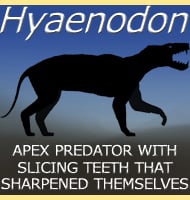Hemicyon
In Depth Not to be confused with the bear dogs which were dog-like mammals that resembled bears; Hemicyon was what is loosely termed a dog bear, which is a bear that is more dog-like. In simple terms, Hemicyon was more closely related to bears than dogs. Hemicyon had a very important difference between it and … Read more
